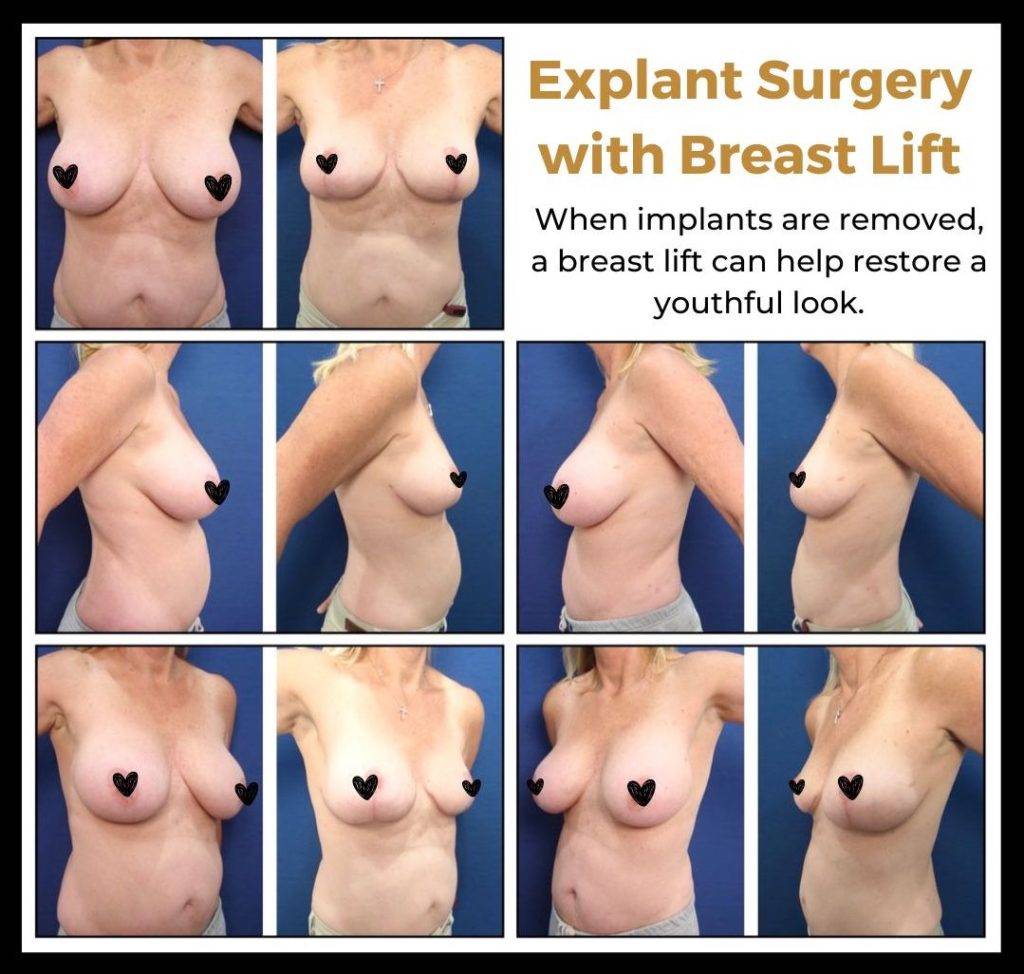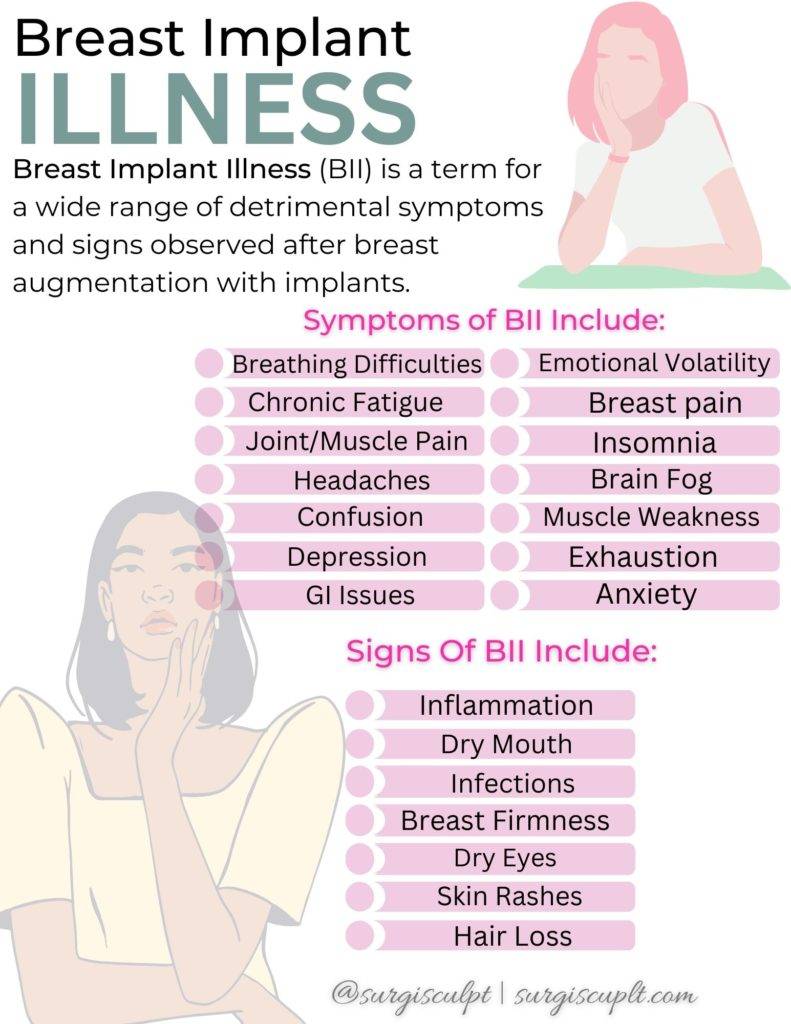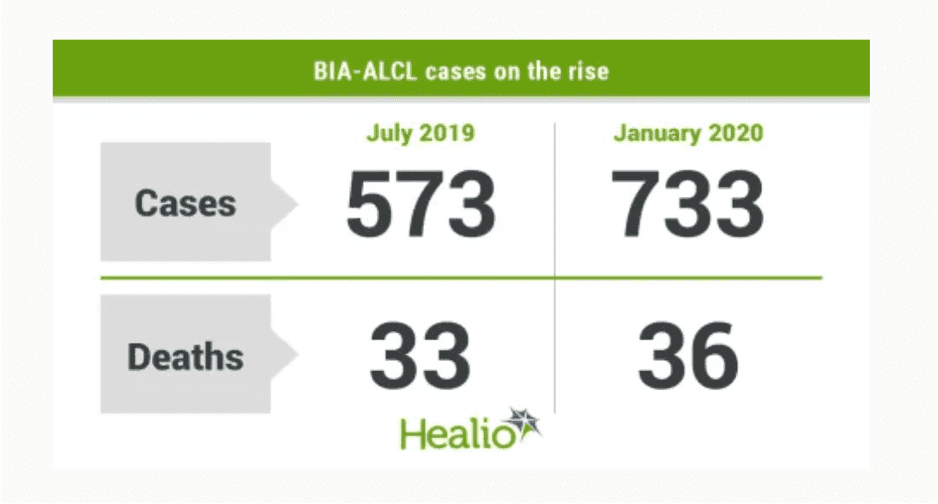What is explant surgery? Simply put, it means to undergo breast implant removal surgery. Women may decide to or need to have implant removal with or without removal of the scar capsule for a variety of reasons. We will look at the seven most common reasons why women choose to undergo breast implant removal surgery in this blog.
You’re not alone if you’ve had breast augmentation and are now considering having your implants and even your scar capsule removed. It may be for health reasons or to change out your implants for new ones that are a different size or shape.
The FDA has given its blessing for the use of breast implants for breast augmentation and breast reconstruction. Each year, many women successfully undergo these procedures, but as with all medical devices, breast implants come with risks that you should be aware of.
Required testing is performed on all FDA-approved breast implants to show their effectiveness and safety prior to implantation. The FDA continues to keep an eye on how patients are responding to breast implants, reviewing new safety information, and keeping in touch with patients and doctors as risks change. Recently, the FDA outlawed the use of textured implants due to a rare but identified risk of developing lymphoma in patients.
Breast implants are largely enjoyed but, can occasionally negatively affect a woman’s health for a number of reasons. The reasons why women choose to have their breast implants removed and/or replaced are multifold. Let’s look at the seven most common reasons for explant surgery.
#1 Implant Exchange Requires Explant Surgery
Women sometimes feel that their implants are too large or too small. In other cases, they believe that their breast mound size has changed for any number of reasons, such as aging or weight gain or loss. Ultimately, the most common reason for breast implant removal (explanation) and exchange is dissatisfaction with breast size or appearance and not necessarily a health reason.
A breast augmentation patient who undergoes explant surgery can:
- Alter the size of their implants
- Change the material or shape of their implants
- Place their implants in a different location (above or below the muscle)
- Undergo a simultaneous breast lift to address breast sagging (ptosis)
The fact that breast implants affect some women’s quality of life is a factor in their decision for implant removal. For example, if they have put on some weight, they may feel that their breasts mounds are too small for them. These women would likely desire a larger implant to be used. When placing a larger implant in a breast pocket, naturally, the breast capsule must be incised to create more space. In contrast, some patients who are physically active and participating in strenuous activities may desire down sizing their implant. This surgical technique could potentially benefit from tightening their current breast pocket by a process called capsulorrhaphy. It becomes apparent that explant procedures are very complex and require a strategically sound surgical plan to provide a successful breast implant surgery.
#2 Capsular Contraction
The body responds to the placement of breast implants by creating fibrous scar tissue around the implant. Typically, this protective capsule is supple. However, if it becomes moderately firm, then your surgeon may recommend either releasing it or even removing it entirely. Breast surgeons universally recommend movement exercises with all types of breast implants to avoid this condition.
But sometimes the capsule tightens and hardens around one or both implants, causing pain and alteration of how the implant affects the breast mound.
The two techniques for treating capsular contracture are either a capsulotomy, release of the capsule, or capsulectomy, removal of the capsule. Which surgical maneuver to choose is the art of breast explant surgery and requires a detailed appreciation of the patient’s desires and physical constraints.
#3 Rotating or Shifting of Implants
Sometimes one or both breast implants rotate or move out of position, giving the breasts an unnatural look. This change may occur for a number of reasons, such as:
- Trauma. If an accident or other incident impacts you hard enough, your breasts may shift.
- When putting in implants, movement or rotation can happen if the pocket made by the surgeon is too big or too small for the size of the implant.
- Heavy lifting or engaging in strenuous exercise. If you do these activities too soon after breast augmentation, it can cause your implants to shift out of position. It’s important to allow your natural scar capsule to form around your implant prior to engaging in strenuous exercise as this will push your implants upward and create an unnatural chest wall prominence.
Malpositioned implants can sometimes be moved repositioned by your surgeon in the early period, but most of the time surgery is needed to reposition them.
#4 Implant Removal Due To Age Of The Implants

Breast implants are frequently thought to have a shelf life of 15 to 20 years or more, though there is no guarantee. Although you may not need to have them removed, as your implants age, they become more likely to have various implant-related complications, like rupture, hardening tissues, or leaking.
Some plastic surgeons encourage patients to remove their implants and replace them with more updated ones. Depending on their age, an exchange may be the safest and healthiest option.
Keep in mind, once you do explant surgery, you may need a breast lift to keep the proportions of your breasts youthful regardless of whether you replace the implants or not.
#5 Infection, Breast Implant Illness (BII), and Rupture
It will be necessary to have your breast implants removed if you develop health-related problems as a result of them. The top three of these complications are as follows:
- Breast implant infection: Although it’s uncommon, the infection might happen close to or around the implant. Explant surgery is typically required since antibiotic therapy is frequently ineffective.
- Breast implant illness (BII)– Following breast augmentation, some women complain of weariness, joint discomfort, brain fog, dry eyes, and other severe symptoms. Although there is no recognized medical diagnosis, BII is established by ruling out other illnesses. This condition, although it affects a relatively small number of women is very real to those that experience it. An important step in treating BII is explant surgery.
- Breast implant rupture: Women who have silicone implants must undergo routine MRI scans to determine if they have a potential leak. Women who have saline implants can typically detect a rupture readily because the implant deflates quickly.
Due to the difficulty in detecting silicone breast implant ruptures, imaging is required. While newer silicone implants’ cohesiveness helps prevent the contents from escaping their protective capsules, ruptures of saline implants pose less of a risk to a woman’s health.

#6 Breast Cancer
Explant surgery is required if breast cancer develops. New implants can be inserted if the remaining breast tissue is sufficient for breast reconstruction surgery. This is of course once all cancerous tissue has been removed, typically during a partial or full mastectomy.
It may be necessary to stretch the skin in order for it to fit the implants or to reconstruct the nipple area. This requires a plastic vs. cosmetic surgeon who has extensive training in reconstructive procedures.
It is important to note that textured breast implants are known to increase the incidence of the Non-Hodgkin lymphoma known as BIA-ALCL. The procedure to remove the implant and any surrounding scar tissue is successful in treating the majority of instances; however, some patients also require chemotherapy or radiation.

The FDA confirmed 573 cases as of July 2019, but the organization discovered 733 distinct cases of breast implant-associated anaplastic large cell lymphoma (BIA-ALCL) worldwide as of January 2020. Clearly, this cancer is on the rise but fortunately, it is highly treatable.
#7 Implants Are No Longer Desired
Lastly, having breast implants removed may be as simple as you no longer desire them. Perhaps you would rather have a more modest or natural appearance. To restore your natural look and be sure your breasts are firm and perky, you may need to have a breast lift.
For patients considering liposuction, talk with your surgeon about fat transfer to the breast. Fat can add a modest increase or rounding of the breasts and look natural as well.
Is Explant Surgery For You?
If you are thinking about explant surgery, for health or cosmetic reasons we would be happy to answer your questions and address any concerns you have. Fill out the contact form on this page for an appointment or give our appointment coordinators a call at (949) 867 3811
To enjoy our blogs on other topics, click here.
